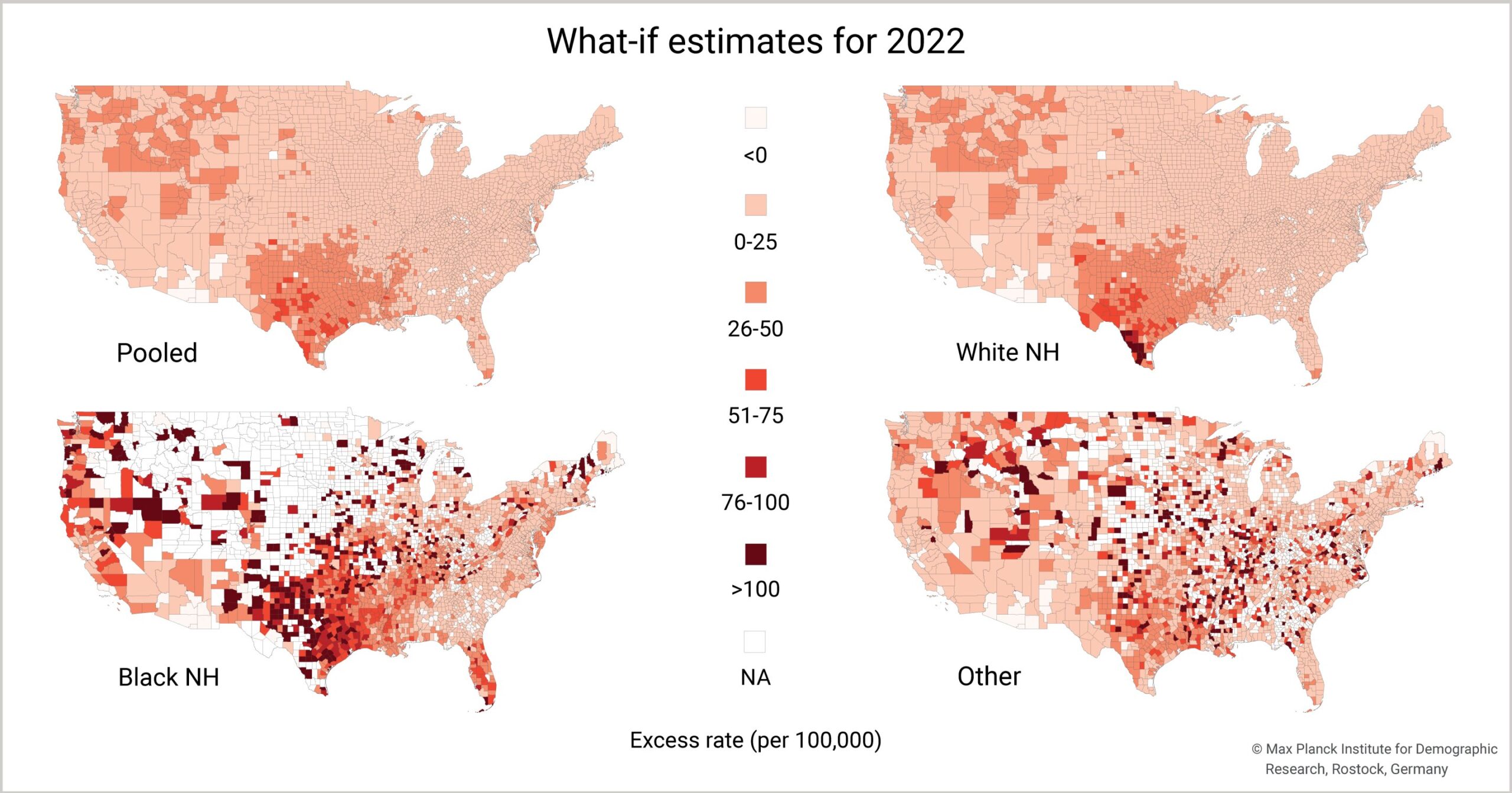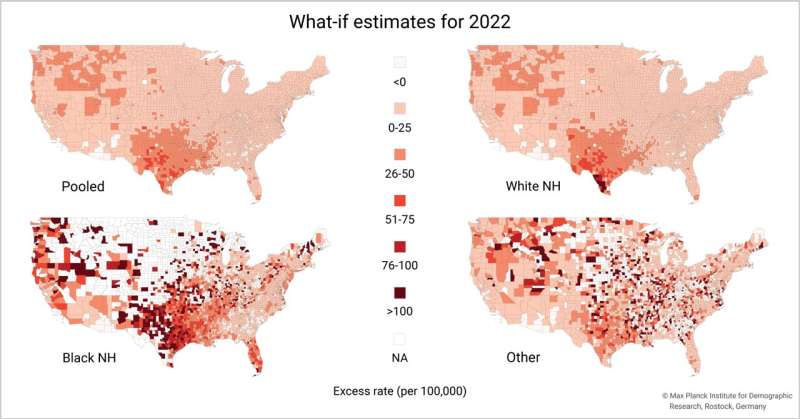

A new study examined how extreme temperatures in the United States significantly affect mortality among different racial groups and found that both cold and hot days increase mortality rates, with the latter disproportionately affecting underrepresented populations. In particular, Non-Hispanic Blacks experienced higher excess mortality on hot days compared to Whites. The findings highlight the importance of adaptation measures, especially for racial minorities, and call for urgent action and targeted policies to mitigate the health risks of extreme temperatures caused by climate change.
Each passing year, climate change drives summer temperatures to new extremes, with heat records being shattered one after another. In a new study, scientists from the Max Planck Institute for Demographic Research (MPIDR) have examined how extreme temperatures in the US affect the mortality of people from different racial groups. Risto Conte Keivabu, Ugofilippo Basellini, and Emilio Zagheni (director of MPIDR) analyzed data from 1993 to 2005 and examined racial differences in temperature-related deaths.
The study found that both extreme cold (temperatures in the coldest 5%) and extreme heat (temperatures in the hottest 5%) increase mortality rates, with heat disproportionately impacting racial minorities.
The work is published in the journal One Earth.
For their study, the researchers analyzed data from death registries in more than 3,000 U.S. counties and found clear evidence that hot days, in particular, have a disproportionate effect on minority communities. Using these results, the researchers extended their analysis to predict trends from 2006 to 2023, since they do not have data for that period. Their calculations suggest that the recent rise in temperatures has only worsened the racial disparities in heat-related deaths.
Minorities bear the brunt
These disparities are particularly pronounced when looking at the year 2022, one of the hottest summers on record. During this period, researchers calculated that the excess death rate for non-Hispanic Blacks was about 26 per 100,000, while for whites it was about 15 per 100,000. The study also revealed large geographical differences in such estimates, further highlighting the uneven burden of extreme heat.
“While our study reveals critical insights, it also has some limitations. The data only goes back to 2005, so the effects of recent temperature increases may not have been fully reflected in our calculations. In addition, we also lacked individual-level socioeconomic data, which may be important for understanding the effects of temperature on mortality. Finally, our counterfactual analysis assumes that the association between heat and mortality persisted after the study period,” explains Keivabu.
Despite these limitations, the study makes a compelling case for immediate action.
“Our findings highlight the critical need for adaptation measures to shield vulnerable populations from the growing dangers of extreme temperatures,” the researcher concludes.
More information:
Risto Conte Keivabu et al, Racial disparities in deaths related to extreme temperatures in the United States, One Earth (2024). DOI: 10.1016/j.oneear.2024.08.013
Provided by
Max Planck Institute for Demographic Research
Citation:
Study finds extreme temperatures increase mortality rates, with heat disproportionately affecting minorities (2024, September 25)
retrieved 25 September 2024
from https://phys.org/news/2024-09-extreme-temperatures-mortality-disproportionately-affecting.html
This document is subject to copyright. Apart from any fair dealing for the purpose of private study or research, no
part may be reproduced without the written permission. The content is provided for information purposes only.